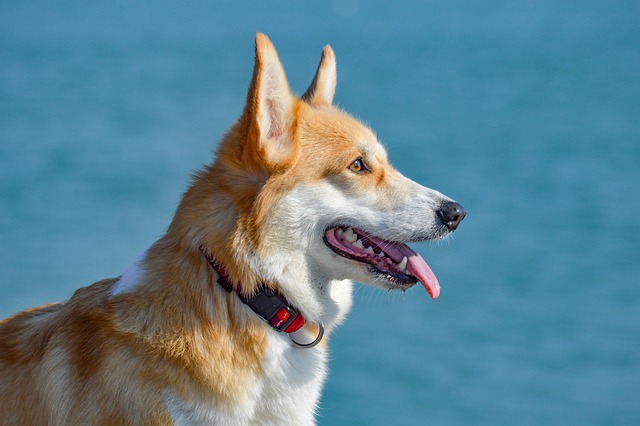
How can I tell if my dog's heatstroke is serious
Let’s be real: It’s a sticky August morning in Los Angeles, and you took your 2-year-old Golden Retriever, Max, for a walk a little later than usual
As a dog owner, you’ve likely focused on your furry friend’s wagging tail and playful eyes, but dental health often goes unnoticed. When it comes to small dogs, the question lingers: do they really face more tooth problems? The answer combines biology, behavior, and the unique challenges of their size.
Small dogs’ jaws and teeth are significantly different from their larger counterparts. With smaller mouths, their teeth are packed closely together. This cramped space makes it easier for food particles and plaque to get trapped, creating an ideal breeding ground for bacteria. Over time, this can lead to gum disease, tooth decay, and even tooth loss. In many regions, pet owners are legally required to ensure their animals receive proper veterinary care, and dental issues often fall under this responsibility.
Diet also plays a huge role. Small dog owners often reach for tiny, soft treats, which can stick to teeth and promote plaque buildup. Unlike large dogs that might chew on sturdy bones (under proper supervision, as per local pet safety guidelines), small breeds may not get the natural cleaning benefits from chewing. Some popular small dog food brands, while convenient, may lack the texture needed to scrape away plaque during eating.
 Certain small dog breeds are genetically predisposed to dental problems. Toy breeds like Chihuahuas, Yorkies, and Pomeranians tend to have smaller, more fragile teeth. These breeds often experience retained baby teeth, where the permanent teeth come in without pushing out the 乳牙. This not only creates overcrowding but also provides a nook for bacteria to thrive. Breeders in many areas are encouraged by regulations to screen for such genetic issues to improve the overall health of the breed.
Certain small dog breeds are genetically predisposed to dental problems. Toy breeds like Chihuahuas, Yorkies, and Pomeranians tend to have smaller, more fragile teeth. These breeds often experience retained baby teeth, where the permanent teeth come in without pushing out the 乳牙. This not only creates overcrowding but also provides a nook for bacteria to thrive. Breeders in many areas are encouraged by regulations to screen for such genetic issues to improve the overall health of the breed.
Lifestyle factors contribute too. Many small dogs live pampered lives indoors, which means less natural wear on their teeth from activities like digging or chewing on natural materials. Additionally, some owners may underestimate the importance of dental care for small dogs, assuming their tiny teeth are less prone to problems. However, ignoring dental hygiene violates basic animal welfare standards in most regions.
Preventing tooth problems in small dogs requires consistent effort. Regular brushing is a must. Use a soft - bristled toothbrush designed for dogs and a vet - approved toothpaste (never human toothpaste, as it can be toxic to pets). In some areas, pet stores are regulated to ensure the products they sell meet safety standards, so look for properly labeled dental care items.
Dental chews and toys can also help. But be cautious—always choose products that match your dog’s size and are approved by local pet product safety regulations. Small, hard toys that can break into sharp pieces pose a choking hazard and can damage teeth. Opt for items specifically designed to clean teeth while being safe for small mouths.
Regular veterinary check - ups are non - negotiable. Vets can detect early signs of dental issues during routine exams, such as red gums or tartar buildup. They may also perform professional cleanings under anesthesia when necessary, following strict safety protocols mandated by animal care laws. These cleanings reach areas that at - home brushing can’t, ensuring comprehensive dental health.
While small dogs do face unique dental challenges, with proper care, you can keep their teeth healthy and their smiles bright. By understanding their specific needs and staying on top of dental hygiene, you’re not just caring for their teeth—you’re ensuring a happier, healthier life for your beloved pet.

Let’s be real: It’s a sticky August morning in Los Angeles, and you took your 2-year-old Golden Retriever, Max, for a walk a little later than usual

You're enjoying a summer afternoon at the park when you notice your dog has stopped panting and appears disoriented - their gums are bright red

Let’s paint the picture: You’re in your Denver apartment, watching your 4-year-old Boston Terrier, Ruby, plop down mid-play session with her favorite toy

Many dog owners notice their pets nails seem shorter after regular walks,but how much does this daily activity actually help?The answer depends on where you walk—concrete sidewalks or asphalt streets gently file nails as a dog's paws hit the ground

Most dog owners notice their pup scooting across the carpet at some point, but few connect it to impacted anal glands. These small sacs near a dog’s rectum secrete a scent for marking territory

Most vets agree that regular dog teeth cleaning is key to avoiding painful dental issues later. For healthy adult dogs, a professional cleaning at the vet’s office every 12 to 18 months usually works well.